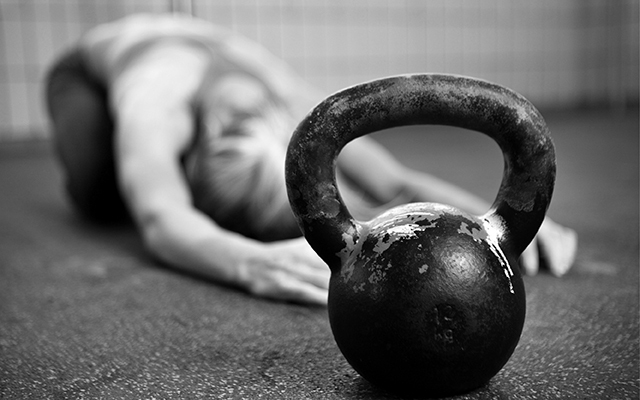Since the start of the year, I’ve been fielding questions related to our Strong, Fast, and Fit program, a six-month-long commitment to exercise and recovery. One of the questions that comes up over and over is about soreness. Specifically:
“Do you think if we aren’t sore after a strength day, then we didn’t get a good workout? Yesterday was a strength day for me and my muscles aren’t sore like they were the first week.”
I love this question, because it really highlights a pervasive myth in the fitness world (and, maybe, in life). There’s a mindset that tells us “no pain, no gain” and “soreness is weakness leaving the body.” We are told that hard work has to hurt and that we have to pay for our success with pain.
None of that is true. You don’t have to hurt to get better. Hard work does not have to be grueling; it can feel good and look easy.
Physiologically, being sore is NOT an indicator of whether you had a good (or bad) workout. Soreness is a stress response, usually to something new or beyond the scope of what we’ve been doing. That’s why it’s so common to feel sore when we start a new program, do a new exercise, or push harder than we have before.
Soreness, or a lack thereof, carries no inherent judgment; no “good” or “bad.” It can be, however, an incredibly useful piece of data, which can help you determine next steps.
Instead of looking at the lack of soreness to tell you something about yesterday’s workout, see what happens if you apply it forward. If you’re not sore, if you’re sleeping well, and your mood and energy are good, that’s a good sign that you are well recovered — in that case, you can ask yourself if you want to push a little harder next time.
The reverse is also true: If you feel unbearably sore, chronically so, with muscle and joint discomfort that doesn’t subside after resting, you might want to reconsider whether you’re truly giving your body the recovery it needs. An easy-to-forget fact is that we don’t get stronger, faster, or fitter during workouts — the time we spend exercising actually tears our muscles apart. The gains we want and fitness goals we seek to realize take place during recovery, when our bodies get the rest and fuel to repair themselves.
When we’re well recovered, we’re better primed to handle stress — in this case, exercise stress — that then sets us up for further improvements. It is this very stress-management cycle that moves us closer to our goal of getting fitter and stronger.
To learn more about recovery, check out these links:
Expert Answers: What are some natural ways to relieve postworkout pain?
Expert Answers: What should I do on my recovery days?
Overtraining: Myths, Facts, and Fantasies

This Post Has 0 Comments